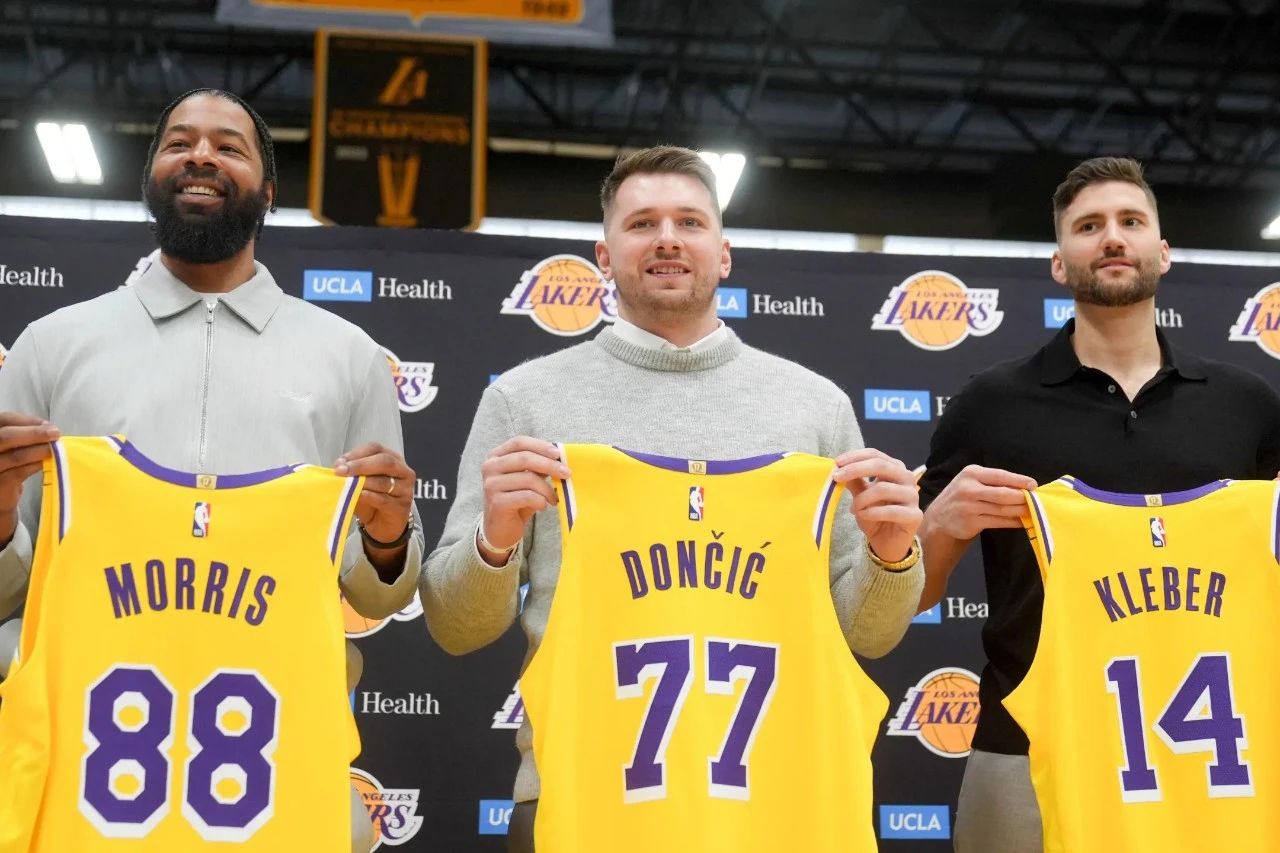Although the Lakers crushed the Clippers 122-97, the trade that brought Luka has sparked a slew of questions and speculation—starting with whether LA will pursue more deals, especially to land a center.
To answer this, we must first understand the true motive behind trading Davis for Luka. In my view, Luka’s arrival was a stroke of unexpected luck for the Lakers, a blessing they couldn’t pass up. They acted decisively without overthinking other factors—like how to handle this season or fill the center position after Davis left.
The Lakers don’t lack guards or forwards; they need a center. Ideally, the next step would be acquiring a qualified center, which could potentially lead to surprising results this season. That’s why rumors are swirling about LA targeting almost every notable center on the market: Toronto’s Jakob Poeltl, Utah’s Walker Kessler, Indiana’s Myles Turner, New York’s Mitchell Robinson, Washington’s Jusuf Nurkić… you name them, they’ve been linked.
Here’s the key: Luka is a long-term investment for the next decade, not a short-term fix. That’s the opposite of why the Mavericks wanted Davis.
Finding a center who fits seamlessly with the current roster would be perfect, but it’s unlikely GM Rob Pelinka has finished his homework or is ready to pull the trigger on another trade. His comments at Luka’s introductory press conference said it all. When discussing the center market, he paused before calling it “dry”—as in barren of quality options.
Pelinka also hinted that if no suitable center emerges, the Lakers will focus on addressing the position in the offseason. Translation: If they trade for a center in the next couple of days, he must be a perfect fit for James and Luka; if not, they’re unsatisfied with the market or can’t land a target.
Impulse buying is off the table. The Lakers seem committed to that philosophy over the final days of the trade window.
Before the Luka deal, Pelinka had nearly finalized a second-half roster built around mobility and defense. The signature move was trading D’Angelo Russell for Dorian Finney-Smith, assembling a unit with Davis, Finney-Smith, Jaxson Hayes, Jarred Vanderbilt, Max Christie, and Gabe Vincent—five of whom prioritize defense over offense. Luka’s arrival upended that plan.
Timing tells the story: The Finney-Smith trade happened a week before Pelinka’s coffee meeting with Mavs owner Mark Cuban. Signing Jamison on a two-way contract a week after the meeting signaled Pelinka’s resolve to trade Davis, using low-risk moves to patch holes. Davis’ public plea for a center came 10 days later, on Christmas—proof the trade wasn’t driven by his demands.
Even if James has only a season left, Pelinka won’t rush. Summer will give him time to consult James and Luka, negotiate with GMs, and court free agents—making signings more strategic.
In the coming year, James won’t settle for just mentoring Luka through a leadership transition. With a new-look roster and a generational talent like Luka, his hunger for another ring will burn brighter than ever. He’ll care deeply about LA’s summer roster rebuild.
So, what about this season? The Lakers aren’t quitting—they’re too close to the fourth-seeded Nuggets after beating the Clippers. Plus, they’ve gone 3-1 in Davis’ four absences, even shooting better from deep.
Bottom line: The Lakers might make a trade in the next two days, but it won’t be impulsive. For James, time is limited, but the Lakers are playing the long game—securing their next decade.
